Museo Nacional Thyssen-Bornemisza
18 February to 24 May 2020
Rembrandt is undoubtedly the most important of
the 17th-century Dutch painters. While most artists of that period specialised
in a particular genre he was renowned in numerous fields and not just as a
painter but also as a draughtsman and engraver. Portraiture was one of those fields
but despite the fact that he achieved the highest level in this genre, as he
did in all the others, no exhibition has previously been exclusively devoted to
this aspect of Rembrandt’s activities.

Rembrandt. Woman in a Fur Wrap, probably Hendrickje Stoffels , 1652 Londres, The National Gallery. Adquirido con la contribución del Art Fund, 1976 /

Rembrandt. Woman in a Fur Wrap, probably Hendrickje Stoffels , 1652 Londres, The National Gallery. Adquirido con la contribución del Art Fund, 1976 /
The Museo Nacional Thyssen-Bornemisza is
presenting Rembrandt and the Portrait in Amsterdam 1590-1670, which brings
together a selectionof portraits produced during the city’s Golden Age, with
Rembrandt and his work as the key focus. This exceptional group of paintings
and prints includes some of the greatest examples of this genre, both by
Rembrandt himself - 22 in total - and by other artists of the period with the
aim of revealing the wide variety and remarkable quality of their work.
The exhibition is curated by Norbert E. Middelkoop and benefits from the collaboration of the Comunidad de Madrid and the support of JTI. The works are loaned from museums and collections world-wide, with notable contributions from the Amsterdam Museum, the Rijksmuseum, the Metropolitan Museum of Art in New York, the National Gallery of Art in Washington and the National Gallery in London. Most have never previously been seen in Spain and in some cases they have almost never been loaned before, including the portrait of a young man from the Nelson Atkins Museum in Kansas. Also notable is the group of prints loaned by the Biblioteca Nacional de España.

Rembrandt. Portrait of a Standard Bearer, possibly Jan van Halewijn, 1654. New York, Metropolitan Museum of Art. The Jules Bache Collection /

Rembrandt. Portrait of a Man at a Writing Desk, 1631. Saint Petersburg, State Hermitage Museum.
Like other portraitists active in Amsterdam, Rembrandtwas conditioned by a market subject to the laws of supply and demand. In contrast to other artists, however, he never allowed the opinion of clients or fellow painters to influence the unconventional nature of his art. Presenting his work in this exhibition alongside that of his contemporaries in the context of the latter’s similarly remarkable achievements allows fora true appreciation of Rembrandt’s contribution to the art of portraiture. It should also be noted that both the exhibition and its accompanying catalogue bring together the results of recent research that has cast new light on the evolution of the portrait in Amsterdam and on Rembrandt’s work in particular.
The renewal of a genre
From the outset of his career in the Dutch capital in the early 1630s Rembrandt imbued his models with an uncommon freedom of movement. In a way comparable to Frans Hals in Haarlem, in Amsterdam Rembrandt opened up new directions, depicting his clients in dynamic poses that create an interaction with the viewer and through which he introduced certain aspects that he had already developed in his mythological, religious and history paintings, such as narrative qualities, the use of chiaroscuro and the depiction of human emotions. During these years the artist increasingly focused on the essential features of his models, particularly their faces. His dynamic brushstrokes, which become particularly heavily charged with pigment in his late period, have led experts to speculate on the artistic aims of the artist, who was seemingly more interested in the representation of his sitters’ characters than in achieving a physical likeness. It is that mysterious quality which explains the secret of the attraction that Rembrandt’s portraits continue to have for the viewer today, more than 350 years after they were created.
A wide-ranging clientele
Rembrandt was not, however, alone nor was he an isolated genius. Amsterdam was home to a large group of portraitists who responded to significant market demand. Their talents flourished due to the growth of the Dutch economy which enriched numerous individuals: the old patrician families, talented new arrivals from other parts of Holland or abroad, and finally the city itself. Amsterdam’s inhabitants needed suitable residences while its civic organisations required worthy meeting places. Portraits thus came to be in demand from anyone with space on the wall and a desire to be recorded for posterity.

Rembrandt. Portrait of a Man, probably Thomas Brouart, 1632 /
Johanna van Merwede van Clootwijk, 1632. Nueva York, The Metropolitan Museum of Art. H. O. Havemeyer Collection. Legado de Mrs. H. O. Havemeyer, 1929.
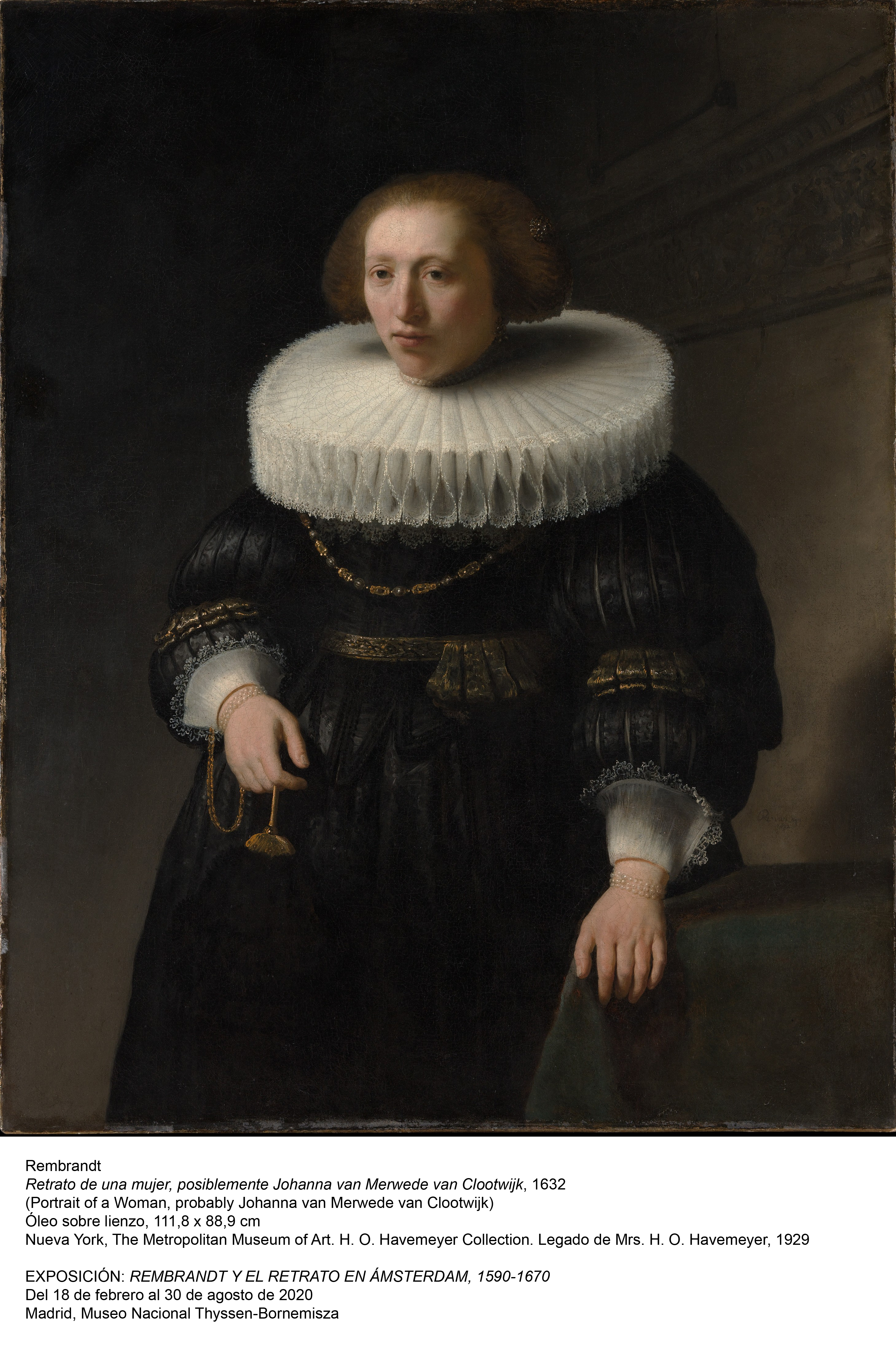
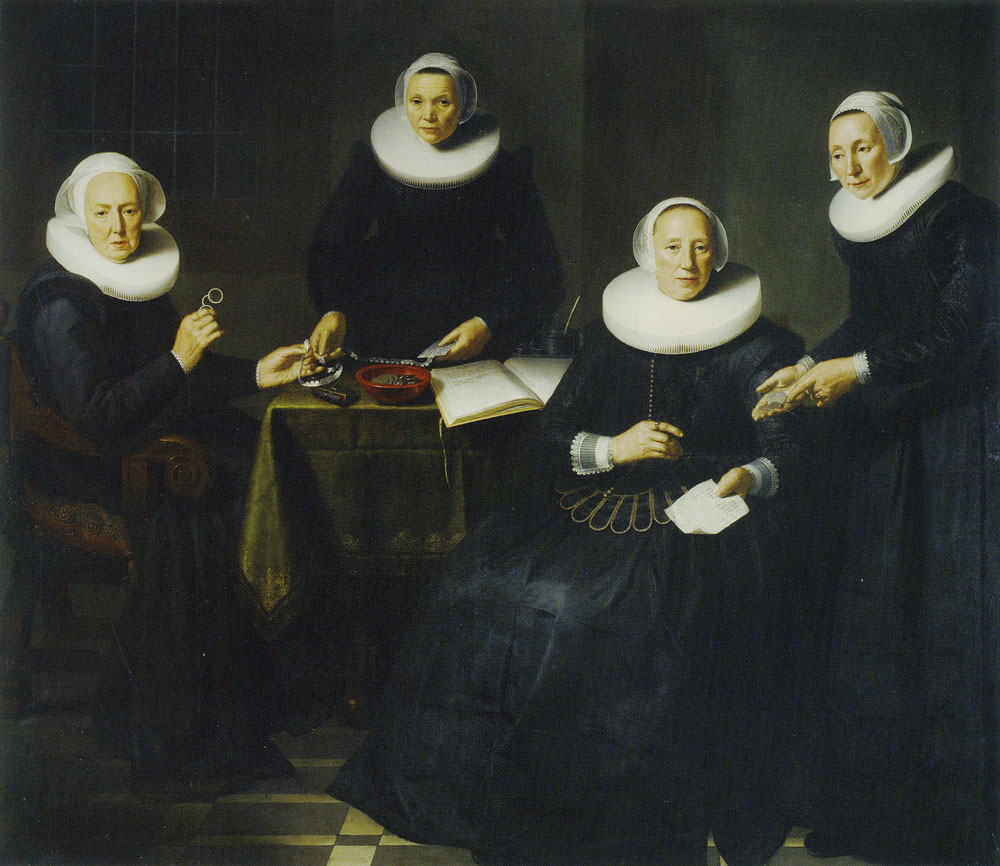
Dirck Santvoort. The Governesses and Wardresses of the Spinhuis, 1638. Amsterdam Museum

Bartholomeus van der Helst. The Headmen of the Arquebusiers’ Civic Guard House, 1655. Amsterdam Museum
These portraits depict married couples, artisans at work, children, scholars, successful businessmen and of course the painters themselves. A special place is occupied by the spectacular group portraits depicting families, regents and regentesses of charitable institutions, members of the civic guard, surgeons giving anatomy classes, and more. As a group they offer a panoramic vision of a society in which portraits functioned as records of civic virtue and were a source of personal pride.
Before Rembrandt made his appearance in Amsterdam’s art world, artists of the stature of Cornelis Ketel, Cornelis van der Voort, Werner van den Valckert, Nicolaes Eliasz. Pickenoy and Thomas de Keyser were among the first to benefit fromthe growing demand for portraits between 1590 and 1630.
When Rembrandt was invited to the city by the painter and merchant Hendrick Uylenburgh, whose studio he directed until 1636, the young artist from Leiden became a serious competitor to these painters. The well connected Uylenburgh introduced him to the city’s social circles, which undoubtedly enabled Rembrandt to make contact with new clients and patrons. His marriage to Hendrick’s sister Saskia Uylenburgh in 1634 also resulted in a significant rise in his social status. In May 1635 the couple left Uylenburgh’s studio and moved into a rented house where Rembrandt set up his own studio. He continued to experiment and try out a range of genres, employing a wide variety of styles. These were years of financial prosperity and in 1639 he was able to buy a permanent home, now the Rembrandthuis museum.
Rembrandt and his rivals
During this same period other painters arrived in Amsterdam with the aim of benefiting from the insatiable desirefor portraits, including Bartholomeus van der Helst from Haarlem, Jacob Backer from Friesland, and Joachim von Sandrart and Jürgen Ovens from Germany. Even Frans Hals had clients in Amsterdam although he never moved there.
Among Rembrandt’s numerous pupils and collaborators some became successful portraitists in their own right, including Ferdinand Bol, Gerbrand van den Eeckhout and Govert Flinck, the latter succeeding him in Uylenburgh’s studio. This conjunction of talent produced a state of healthy competition among the different masters, all anxious to secure the largest number of commissions, a situation that gave rise to the consistently high quality of their works.

Rembrandt. Tito van Rijn, , the Artist’s Son, Reading, hacia 1660-1665. Viena, Kunsthistorisches Museum, Gemäldegalerie.
Saskia died in 1642, leaving Rembrandt to care for their one-year-old son Titus. This was a difficult period for the painter as his rhythm of work slowed and he started to experience financial difficulties. In 1647 Hendrickje Stoffels entered the artist’s household as a servant. She would eventually become his companion and the mother of their daughter Cornelia, born in 1654. During this period around the mid-century Amsterdam’s art world began to change with the emergence of the first indications of an “academic” style of a more international type in portraiture, evident in the work of artists such as Cornelis Jonson van Ceulenand Isaac Luttichuys.
Rembrandt, however, continued to follow his own path, reducing his colour range and developing a style that Amsterdam’s officials considered too severe and thus inappropriate for the decorative programme of the new Town Hall on Dam Square. Some of the artist’s former collaborators such as Flinck and Bol were commissioned to decorate the building’s rooms with the result that they overtook their former master in terms of success and popularity.
Rembrandt’s financial problems during these years resulted in the sale of his paintings and valuable objects at public auction after he was declared bankrupt in 1656, a subject of ongoing research by specialists. The family moved to the working-class Jordaan district and the artist, his son Titus and Hendrickje set up a new art business that allowed him to continue working independently.
The exhibition is curated by Norbert E. Middelkoop and benefits from the collaboration of the Comunidad de Madrid and the support of JTI. The works are loaned from museums and collections world-wide, with notable contributions from the Amsterdam Museum, the Rijksmuseum, the Metropolitan Museum of Art in New York, the National Gallery of Art in Washington and the National Gallery in London. Most have never previously been seen in Spain and in some cases they have almost never been loaned before, including the portrait of a young man from the Nelson Atkins Museum in Kansas. Also notable is the group of prints loaned by the Biblioteca Nacional de España.

Rembrandt. Portrait of a Standard Bearer, possibly Jan van Halewijn, 1654. New York, Metropolitan Museum of Art. The Jules Bache Collection /

Rembrandt. Portrait of a Man at a Writing Desk, 1631. Saint Petersburg, State Hermitage Museum.
Like other portraitists active in Amsterdam, Rembrandtwas conditioned by a market subject to the laws of supply and demand. In contrast to other artists, however, he never allowed the opinion of clients or fellow painters to influence the unconventional nature of his art. Presenting his work in this exhibition alongside that of his contemporaries in the context of the latter’s similarly remarkable achievements allows fora true appreciation of Rembrandt’s contribution to the art of portraiture. It should also be noted that both the exhibition and its accompanying catalogue bring together the results of recent research that has cast new light on the evolution of the portrait in Amsterdam and on Rembrandt’s work in particular.
The renewal of a genre
From the outset of his career in the Dutch capital in the early 1630s Rembrandt imbued his models with an uncommon freedom of movement. In a way comparable to Frans Hals in Haarlem, in Amsterdam Rembrandt opened up new directions, depicting his clients in dynamic poses that create an interaction with the viewer and through which he introduced certain aspects that he had already developed in his mythological, religious and history paintings, such as narrative qualities, the use of chiaroscuro and the depiction of human emotions. During these years the artist increasingly focused on the essential features of his models, particularly their faces. His dynamic brushstrokes, which become particularly heavily charged with pigment in his late period, have led experts to speculate on the artistic aims of the artist, who was seemingly more interested in the representation of his sitters’ characters than in achieving a physical likeness. It is that mysterious quality which explains the secret of the attraction that Rembrandt’s portraits continue to have for the viewer today, more than 350 years after they were created.
A wide-ranging clientele
Rembrandt was not, however, alone nor was he an isolated genius. Amsterdam was home to a large group of portraitists who responded to significant market demand. Their talents flourished due to the growth of the Dutch economy which enriched numerous individuals: the old patrician families, talented new arrivals from other parts of Holland or abroad, and finally the city itself. Amsterdam’s inhabitants needed suitable residences while its civic organisations required worthy meeting places. Portraits thus came to be in demand from anyone with space on the wall and a desire to be recorded for posterity.
Rembrandt. Portrait of a Man, probably Thomas Brouart, 1632 /
Johanna van Merwede van Clootwijk, 1632. Nueva York, The Metropolitan Museum of Art. H. O. Havemeyer Collection. Legado de Mrs. H. O. Havemeyer, 1929.


Dirck Santvoort. The Governesses and Wardresses of the Spinhuis, 1638. Amsterdam Museum

Bartholomeus van der Helst. The Headmen of the Arquebusiers’ Civic Guard House, 1655. Amsterdam Museum
These portraits depict married couples, artisans at work, children, scholars, successful businessmen and of course the painters themselves. A special place is occupied by the spectacular group portraits depicting families, regents and regentesses of charitable institutions, members of the civic guard, surgeons giving anatomy classes, and more. As a group they offer a panoramic vision of a society in which portraits functioned as records of civic virtue and were a source of personal pride.
Before Rembrandt made his appearance in Amsterdam’s art world, artists of the stature of Cornelis Ketel, Cornelis van der Voort, Werner van den Valckert, Nicolaes Eliasz. Pickenoy and Thomas de Keyser were among the first to benefit fromthe growing demand for portraits between 1590 and 1630.
When Rembrandt was invited to the city by the painter and merchant Hendrick Uylenburgh, whose studio he directed until 1636, the young artist from Leiden became a serious competitor to these painters. The well connected Uylenburgh introduced him to the city’s social circles, which undoubtedly enabled Rembrandt to make contact with new clients and patrons. His marriage to Hendrick’s sister Saskia Uylenburgh in 1634 also resulted in a significant rise in his social status. In May 1635 the couple left Uylenburgh’s studio and moved into a rented house where Rembrandt set up his own studio. He continued to experiment and try out a range of genres, employing a wide variety of styles. These were years of financial prosperity and in 1639 he was able to buy a permanent home, now the Rembrandthuis museum.
Rembrandt and his rivals
During this same period other painters arrived in Amsterdam with the aim of benefiting from the insatiable desirefor portraits, including Bartholomeus van der Helst from Haarlem, Jacob Backer from Friesland, and Joachim von Sandrart and Jürgen Ovens from Germany. Even Frans Hals had clients in Amsterdam although he never moved there.
Among Rembrandt’s numerous pupils and collaborators some became successful portraitists in their own right, including Ferdinand Bol, Gerbrand van den Eeckhout and Govert Flinck, the latter succeeding him in Uylenburgh’s studio. This conjunction of talent produced a state of healthy competition among the different masters, all anxious to secure the largest number of commissions, a situation that gave rise to the consistently high quality of their works.

Rembrandt. Tito van Rijn, , the Artist’s Son, Reading, hacia 1660-1665. Viena, Kunsthistorisches Museum, Gemäldegalerie.
Saskia died in 1642, leaving Rembrandt to care for their one-year-old son Titus. This was a difficult period for the painter as his rhythm of work slowed and he started to experience financial difficulties. In 1647 Hendrickje Stoffels entered the artist’s household as a servant. She would eventually become his companion and the mother of their daughter Cornelia, born in 1654. During this period around the mid-century Amsterdam’s art world began to change with the emergence of the first indications of an “academic” style of a more international type in portraiture, evident in the work of artists such as Cornelis Jonson van Ceulenand Isaac Luttichuys.
Rembrandt, however, continued to follow his own path, reducing his colour range and developing a style that Amsterdam’s officials considered too severe and thus inappropriate for the decorative programme of the new Town Hall on Dam Square. Some of the artist’s former collaborators such as Flinck and Bol were commissioned to decorate the building’s rooms with the result that they overtook their former master in terms of success and popularity.
Rembrandt’s financial problems during these years resulted in the sale of his paintings and valuable objects at public auction after he was declared bankrupt in 1656, a subject of ongoing research by specialists. The family moved to the working-class Jordaan district and the artist, his son Titus and Hendrickje set up a new art business that allowed him to continue working independently.
Rembrandt
continued to paint and received various commissions and, although he never again
enjoyed the success or public recognition of earlier decades he remained an
important and recognised figure. His influence on the art of his day was
immense, with numerous students to whom he passed on his manner of painting and
countless followers who subsequently perpetuated his style.
Chronological
survey, tronies and prints
The exhibition is structured chronologically in the form
of nine sections. The first rooms are devoted to the tradition of portraiture immediately
prior to Rembrandt’s arrival in Amsterdam and the start of the renewal of the
genre. This is followed by a space that centres on the artist’s early period as
a portraitist and several chronological rooms which present “Rembrandt and his
rivals”. It concludes with “The late years”, featuring works dating between 1660
and 1670. Half-way through this sequence is a space devoted to small-scale and genre
portraits, while the final section focuses on the artist’s output as a
printmaker, with a notable selection
of private portraits and self-portraits.
Also worthy of special mention is the
presence throughout these different sections and corresponding to them in date
of magnificent examples of so-called tronies (from the Dutch tronie, meaning
face). Rather than representing a specific sitter, this type of specifically
Dutch portrait depicts bust-length figures with different poses and facial expressions.
Works of this type were used to study both the expressivity of the faces as
well as the composition and light, which were subsequently used in other
compositions.
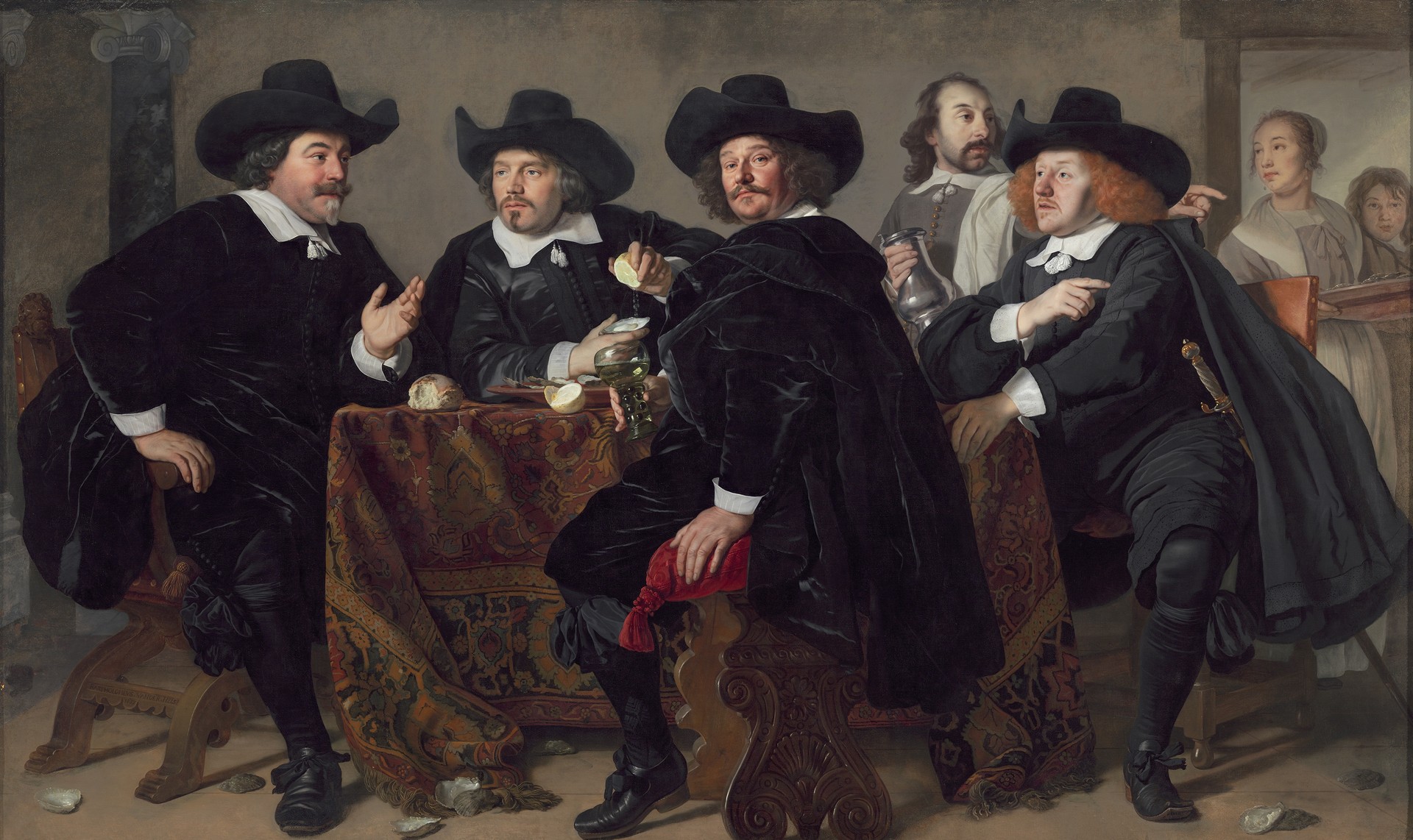
Finally, due to its large size (186 x 362 cm) one of the works in the exhibition, a group portrait of a civic guard by Frans Badens, is displayed in the museum’s Main Hall.
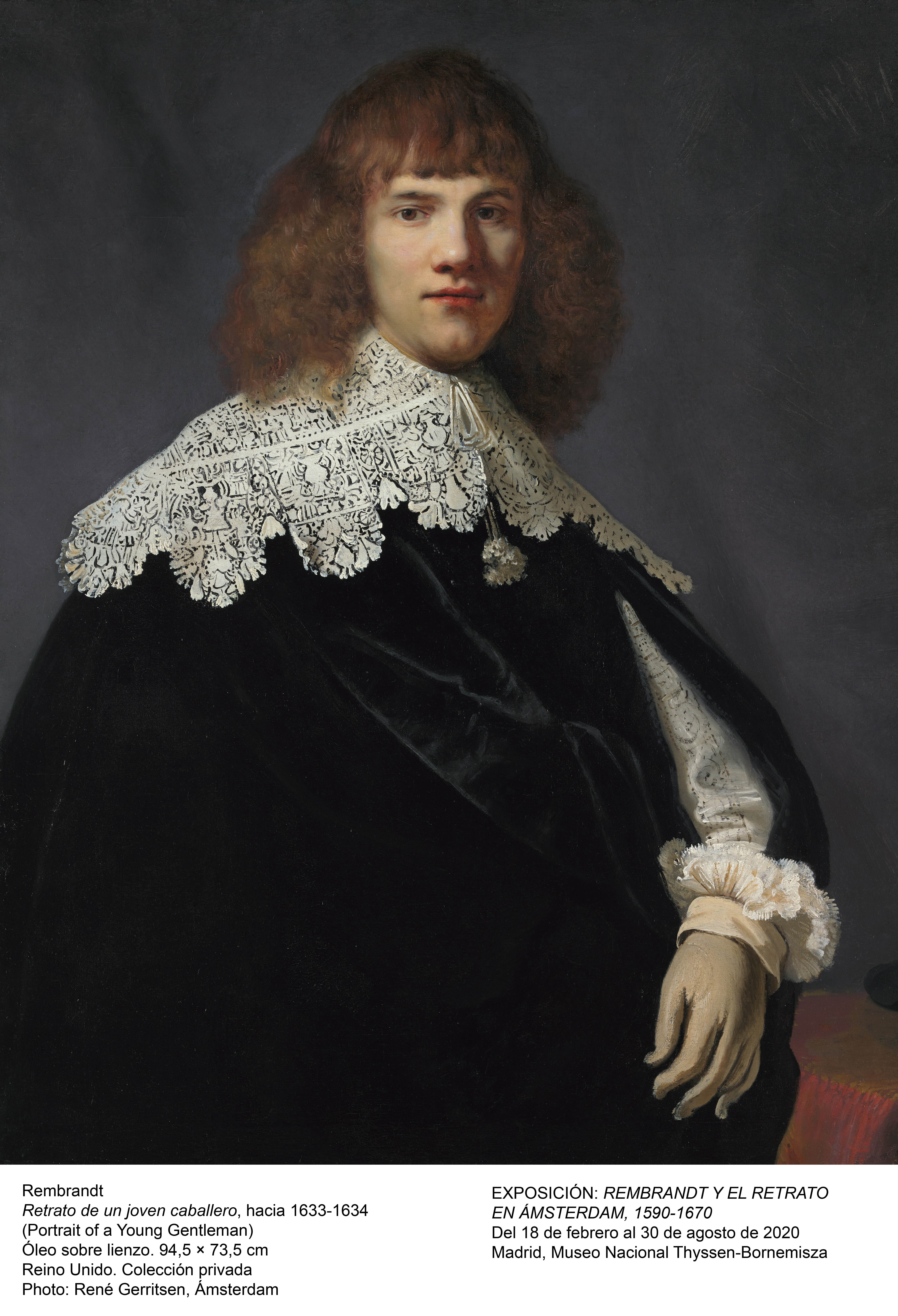
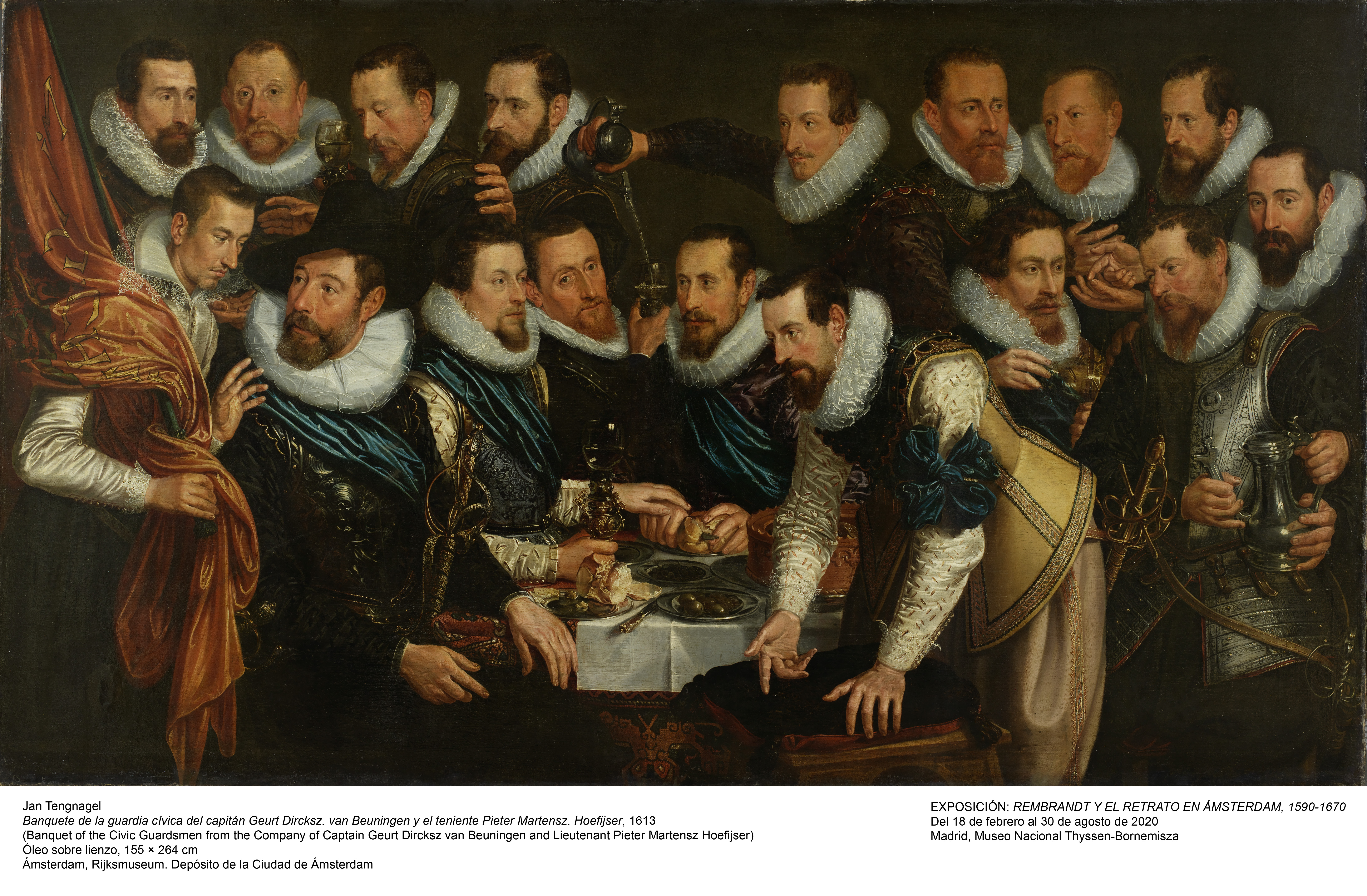
- Rembrandt (1606-1669), Woman in a Fur Cap, probably Hendrickje Stoffels, 1652 The National Gallery, London
- Rembrandt (1606-1669), Portrait of a Standard Bearer, possibly Jan van Halewijn Metropolitan Museum of Art, New York

Bartholomeus van der Helst (1613 – 1670), The headmen of the Arquebusiers’ Civic Guard House, 1655
Amsterdam Museum, Amsterdam
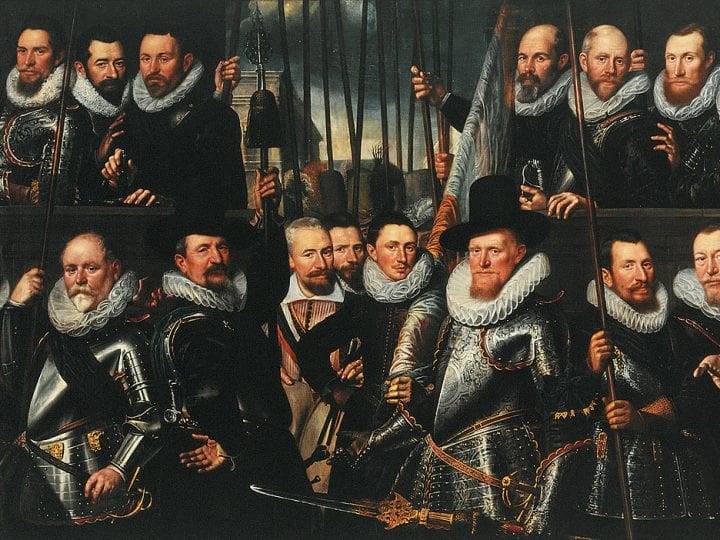
Amsterdam Museum, Amsterdam

Finally, due to its large size (186 x 362 cm) one of the works in the exhibition, a group portrait of a civic guard by Frans Badens, is displayed in the museum’s Main Hall.


Number
of works: 97 (80 paintings, 16 prints and 1 copperplate)
Publications: Catalogue with texts by Norbert E. Middelkoop, Dolores Delgado, Maerten Hell, Rudi Ekkart, Claire van den Donk and other authors.
Publications: Catalogue with texts by Norbert E. Middelkoop, Dolores Delgado, Maerten Hell, Rudi Ekkart, Claire van den Donk and other authors.

